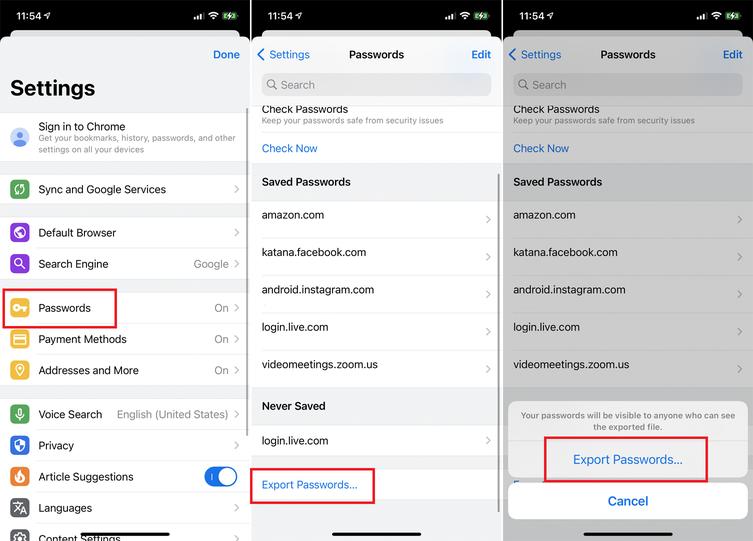How to Turn Microsoft Authenticator Into Your Password Manager
Managing passwords across different browsers between your computer and mobile device typically requires a password manager. That is, unless you use the Microsoft Authenticator app. Though it was designed to provide two-factor authentication to your online accounts, its capabilities were expanded to also manage passwords across Microsoft Edge and Chrome.
Microsoft Authenticator compares favorably with other authentication apps, but the same cannot be said when compared to full-featured password managers, such as LastPass, Dashlane, Keeper, and 1Password. But despite more limited features and browser support, the free Microsoft Authenticator does have its uses.
The app can sync your website passwords in Edge on iOS/iPadOS and Android devices and in Chrome on your desktop via an extension; fill in your passwords using Microsoft Autofill; secure logins with 2FA; and import passwords from other services. Here's how to get started.
Create a Microsoft Account
For this to work, you need a Microsoft account. If you don’t already have one, head to the Microsoft Account website and create an account with either a pre-existing email address or a new one. Create a password and follow the required steps to generate your account.
Enable Password Settings
Once the account has been created, you can install Microsoft Authenticator from Apple’s App Store or Google Play. Once the app is installed, you need to appoint it as your device’s password manager. Go to Settings > Passwords > AutoFill Passwords on an iPhone or iPad. Check the entry for Authenticator. If Keychain is checked, you’ll have to uncheck that as well.
On Android, go to Settings > System > Languages & input > Autofill service, or however it is nested on your device. At the list of Autofill services, tap the entry for Authenticator.
Import Passwords
Open the Microsoft Authenticator app and sign in with your Microsoft account. After adding and syncing your Microsoft account, tap the Passwords icon at the bottom. If you’ve already been storing passwords through another app, the first task on your to-do list is to import those passwords into Microsoft Authenticator.

The app can import passwords from a variety of other programs, including Google Chrome, Firefox, LastPass, Bitwarden, and RoboForm.
With Chrome, you can import the passwords directly. Open Chrome on mobile and go to Settings > Passwords > Export Passwords, then tap Export Passwords. Choose Authenticator as the target. Return to Authenticator to see the imported passwords.
For all other programs, you must generate a CSV file that can then be imported into Authenticator. The steps for generating a CSV file vary from app to app. In general, look for the Settings or Options menu in your password manager or web browser and find a Passwords category, which should include an Export Passwords command.
Follow the steps to create the CSV file, then move it to your mobile device or cloud-based storage service that you can access from your mobile device.
In the Authenticator app, open the menu and go to Settings > Import Passwords. Tap the button for Import from CSV.
Browse to and select the CSV file. You’re then returned to Authenticator to see your imported passwords.
Sync Passwords With Microsoft Autofill
Your next task is to start saving logins for any new accounts or ones not already imported into Authenticator. For this, you turn to Microsoft Autofill, which is built into Edge and usable with Chrome through an extension.
Open Edge on your mobile device and browse to a website with login credentials that have yet to be synced with Authenticator. Type your username and password, then tap the key icon above the keyboard to open the Authenticator app.
Tap Add password. Enter the username and password for the site you want to use and then tap Save. Your password should automatically be entered in the password field. Sign into the site.
The next time you need to sign into that website, type your username and then tap the password field. Tap the key icon above the keyboard to open Authenticator with an entry for that website. Select the entry to fill in the password and then sign in.
To use Microsoft Autofill with Chrome, add the Microsoft Autofill extension to the browser through the Chrome Web Store. Enable the extension, then click the Autofill icon in the Chrome toolbar. Click the Sign in with Microsoft button and sign in with your Microsoft account.
Once signed in, click the Autofill icon again and select the Manage passwords button. Wait a few seconds, and your saved passwords should sync and appear in the list.
If you browse to a site with credentials stored in Authenticator. Your username and password should automatically appear in their respective fields.
You can also go to a site with credentials not yet saved in Authenticator. When you enter your username and password Microsoft Autofill will offer to save your credentials. Click Save.
Sign up for Security Watch newsletter for our top privacy and security stories delivered right to your inbox.
EmailThis newsletter may contain advertising, deals, or affiliate links. Subscribing to a newsletter indicates your consent to our Terms of Use and Privacy Policy. You may unsubscribe from the newsletters at any time.
Thanks for signing up!Your subscription has been confirmed. Keep an eye on your inbox!








